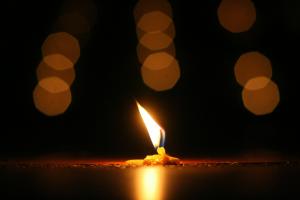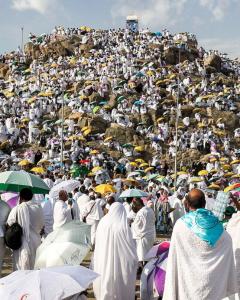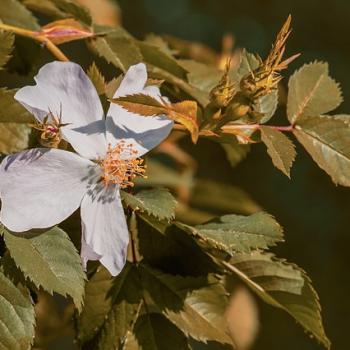When I imagine sacred space, my first impulse is to think of the soft, thick purple and cream-coloured prayer carpet that sits at the foot of the floor-to-ceiling windows in my living room. Looking out the past the balcony to the right, I can glimpse the moon blooming and retreating each passing month in the night sky.
A vase with fresh roses and a flickering candle accompany me on my left, while the fragrance of wild orange and bergamot fills the room from the diffuser on the corner of the TV stand. At times, ney music or Quranic verses may hum softly in the background, as I open a page or two of Rumi’s poetry, breathing their wisdom deep into my belly.
Outwardly, these adornments work together beautifully to create an ambiance that nurtures tranquility and promotes self care and compassion. After neglecting these qualities for so long, it’s taken me a few years to strike a favorable balance.

The more time I spend refining my sacred space, though, the more I realise the end goal is so much more expansive than simply achieving comfort in the body and mind. By creating external conditions whereby stillness is enhanced, distractions are minimized and senses are refreshed, I’m pushed to focus on cultivating the other, more important, sacred space: the one inside.
As the spiritual and psychological work of this path continually reveal to me, this isn’t always comfortable. In fact, it is often the opposite. Replicating the stillness of the outer sacred space in the inner one requires a lot of spring cleaning to clear out the junk—such as the impulsive thoughts and self-limiting beliefs—that have been lodged in many nooks and crannies of my psyche.
Hanging onto emotional baggage dulls the energy of my inner world a lot like clutter might in a room. Until those suitcases are opened and the anguish and pain are released, there will always be barriers to inner stillness. It’s a lot like ablution, only instead of water, it is zikr that does the cleansing.
In a sense, the inner work of decluttering is about nurturing the inner sacred space so our deeper and more meaningful senses can be accentuated — the spiritual senses in the heart, or the “deeper level of mind” as Shaikh Kabir sometimes calls it.
Among the spiritual senses, hearing seems important to focus on here. If my thoughts pull me to past traumas or future worries, how can I listen to the sacredness of this moment? I find it beautiful that the Divine Name expressing the All-Hearing Quality of Reality, As-Sami, shares the same root as Sema, the Mevlevi whirling ceremony, during which each dervish spinning on her axis awakens to the harmony in her innermost self and the community of creation.
In Book III of his epic Masnavi, Rumi offers some clues about spiritual listening:
If you don’t perceive
how the leaves applaud
you need a spiritual ear,
not the ear of the body.Close the ear of the head
to witty chatter and lying,
that you might behold
the radiant city of the soul.The ear of Muhammad draws out
the hidden meaning in words,
because as God says of him
in the Quran, “he is an ear.”(Mathnawi III, 100-102, from the Rumi Daybook, page 185)
The type of hearing described above requires a high degree of inner stillness and focus. It’s incredible to imagine how pristine the sacred space embodied by Muhammad, peace and blessings be upon him, must have been for his heart to receive the Quran. A similar emptiness of the lower self, or nafs in sufi terminology, gave Rumi a conduit into the Source of Life that allowed tens of thousands of verses of poetry to flow through his humble heart and delight and heal humanity for centuries.
While we may not master the level of attention of our teachers and guides, I’m discovering that after enough emptying, it’s possible to tap into the stillness beyond thought and hear the voice of my soul more clearly. It is here that I get little tastes of the creativity that has the potential to spring up like sweet water from the dry earth of the body and mind. When it happens, I sense I’m coming into contact with a universal waterfall of meanings. Words from it splash into my mind’s ear and images into my mind’s eye, which I can catch and convey on paper, often in a poem or a song.
In many ways, fostering inner sacred space is about creating the conditions to be able to listen. When my immediate physical space is clean, my senses are calm and still and I find it easier to focus on whatever I am doing. Similarly, clearing away some of what’s muddling my inner sanctuary crystallizes the capacity to attend to what is beyond the chatter of the mind.
There’s something very sensual about enriching sacred space. Dimming the lights, illuminating candles, filling the room with beautiful scents and music are typically associated with romantic love. But the intimacy need not be with another human being; It can also be about engendering romance with our own souls and the Beloved all loves are seeking.
This type of intimacy allows us to delve deeply into our hearts and souls and bring out the unique jewels the Divine Reality, Allah, longs for us to manifest in the world. The way I imagine sacred space, then, has evolved from something outward (surrounding myself with beauty) to something inward (creating the stillness needed to access the beauty of Universal Intelligence).
Ultimately, both are essential to lighting the way to reach a point of contact with the sacred in me —something every one of us shares right at our very centre, if we are silent enough to perceive what Rumi expresses in this timeless verse:
Ground yourself, strip yourself down,
To blind, loving silence.
Stay there, until you see
You are gazing at the Light
With its own ageless eyes.~From the poem, One, One One
Translated by Andrew Harvey. Edited by Kabir Helminski
The Rumi Collection












